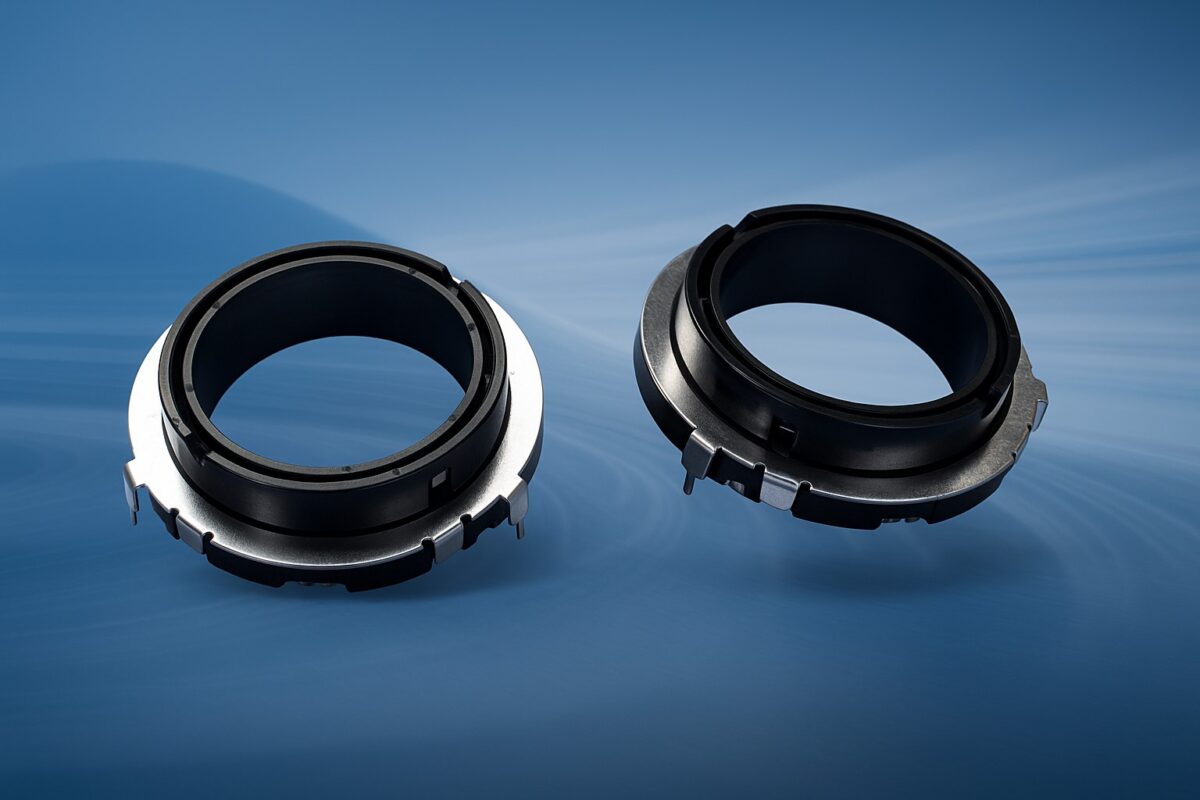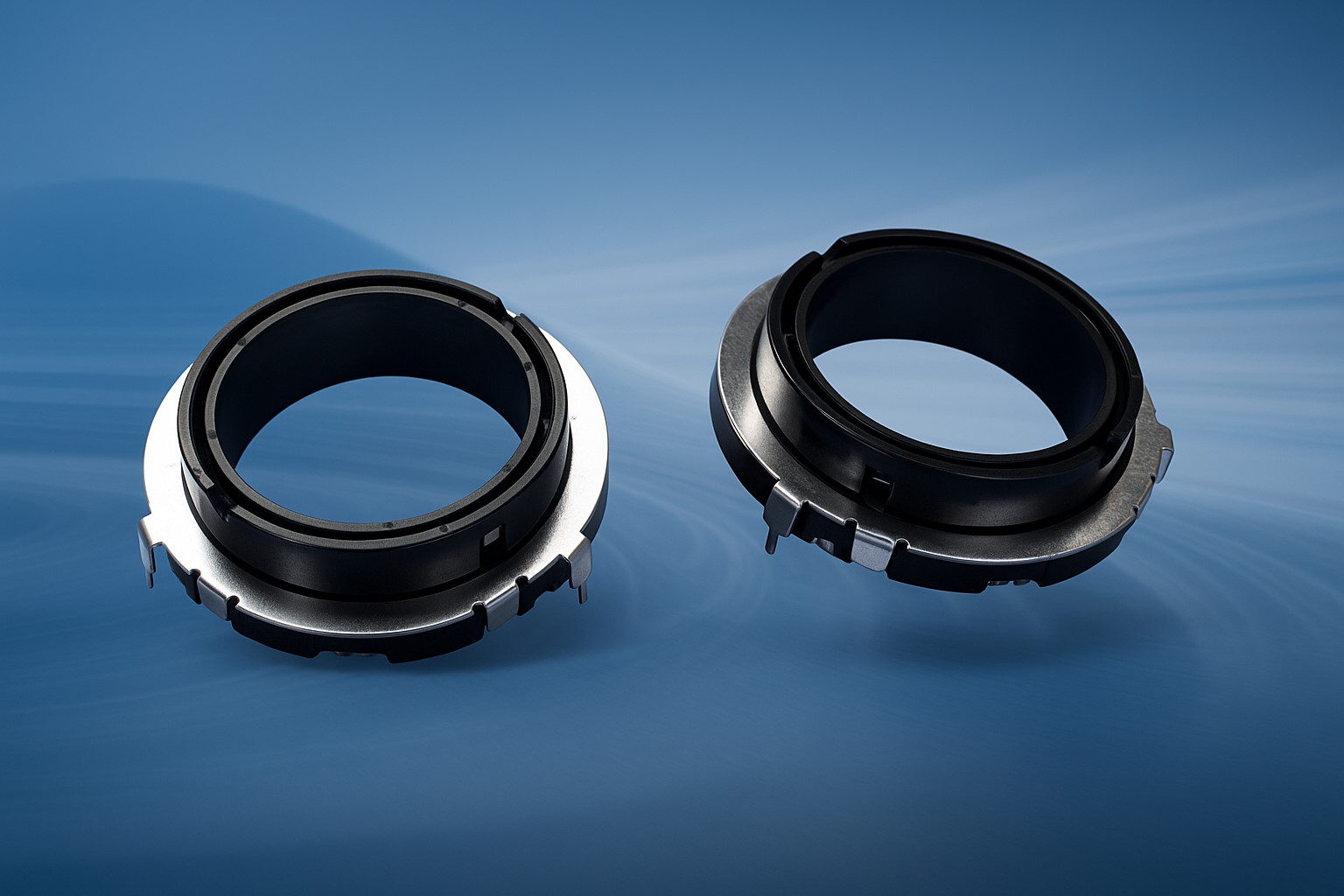The Demand for Precision in Motion Systems
Modern automation demands exceptional precision. In industries like robotics, CNC machining, and electric vehicles, real-time motor feedback is essential. Here, hollow encoders become a game-changing solution. As a bulk encoder manufacturer, Fanrui delivers reliable hollow encoder solutions for global integration needs.
Section 1: What Are Hollow Encoders?
The encoders are a type of rotary encoder specifically engineered with a central opening, allowing them to fit directly over a motor or machine shaft rather than being mounted via a fixed shaft of their own. This unique through-hole design eliminates the need for additional couplings or mechanical brackets, significantly reducing installation complexity and saving valuable space in compact systems.
By mounting directly onto the motor shaft, hollow encoders provide a more stable and rigid mechanical connection, enhancing long-term reliability and signal accuracy. Their streamlined form factor makes them ideal for applications where space is limited, such as in robotics, conveyors, CNC machinery, and automation equipment.
In summary, hollow encoders offer an efficient, space-saving solution that simplifies mechanical integration while delivering precise rotational feedback, making them a popular choice for modern motion control systems.
Types of Encoders:
Through-Hollow Encoders: The shaft passes entirely through the encoder
Blind-Hollow Encoders: Shaft enters partially and stops inside the encoder
Both types offer flexibility depending on motor designs.

Section 2: Benefits of Hollow Encoders in Motor Feedback
The encoders are preferred for precise feedback due to multiple technical advantages:
Reduced Mechanical Slippage: Direct shaft coupling reduces backlash, improving accuracy.
Compact Design: Ideal for tight enclosures, improving space efficiency in motors.
Faster Installation: Simplified mounting reduces alignment time.
High Signal Fidelity: Optical or magnetic signal generation ensures precise pulse output.
Vibration Resistance mechanical load leads to greater resilience in dynamic environments.
Section 3: Key Applications of Hollow Encoders
Hollow encoders enhance feedback precision in the following sectors:
Robotics: Ensures accurate joint movement feedback
Automated Machinery: Controls axis positioning in CNC tools
Elevators and Lifts: Regulates vertical motor speed
Electric Vehicles: Support regenerative braking systems
Section 4: Technical Considerations When Choosing a Hollow Encoder
To ensure optimal performance, consider:
Resolution: Defines accuracy (e.g., 1024 PPR, 4096 PPR)
Output Type: TTL, HTL, or analog signal needed
Shaft Size Compatibility: Must match the motor’s shaft diameter
Environmental Rating: IP rating ensures dust/water resistance
Temperature Range: Adapted for industrial or outdoor environments
At Fanrui, we help clients choose the right encoder based on application.
Section 5: Comparing Hollow vs Solid Encoders
While both serve similar feedback purposes, key differences exist:
| Feature | Hollow Encoder | Solid Encoder |
|---|---|---|
| Mounting Method | Directly on the shaft | Coupled via a bracket |
| Space Efficiency | High | Moderate |
| Backlash | Low | Higher |
| Alignment Required | Minimal | Precise needed |
| Maintenance | Lower | Moderate |
The encoders offer clear benefits where size and accuracy matter most.
Conclusion: Precision Built Into Every Turn
In fast-moving industries, precision is not optional—it’s foundational. Hollow encoders provide the accuracy, efficiency, and durability that high-performance motor systems demand. At Fanrui, we’re ready to help you build smarter motion systems.
CTA: [Contact Fanrui for Hollow Encoder Customization]






